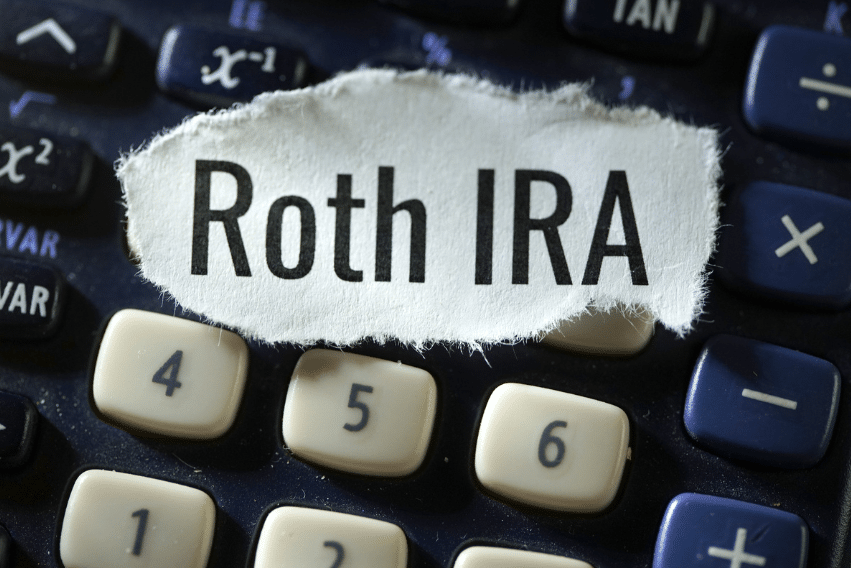It doesn’t have the lyrical style of the Bard but showing your love to your partner and family with financial security is a beautiful and loving thing, nonetheless. Let’s start with a little primer on the Roth IRA as not everyone is able to provide their financial gift of love via a Roth.
For starters, you must have earned income to be eligible to contribute – that means some kind of a job or self-employment income. As you think about teens and college students, this is important because if they are working, they are eligible for a Roth.
For married couples, one partner’s income covers both people so for stay-at-home parents, they are eligible based on their spouse’s income assuming all other criteria are met.
Also, the funds contributed to the Roth don’t necessarily have to come directly from the job like employer retirement plan contributions do (via payroll withholding). A Roth contribution can come from savings or from a gift. For parents, this is a great way to help your working kids have experience with saving and investing – even if it is a small part–time job. And encouraging them to save a percentage of their income will help them create this important financial habit.
- You can directly give them the funds for contribution to their Roth for birthdays or holidays.
- You can match what they contribute to their Roths so that you are incentivizing and rewarding a great financial habit.
- The limit for 2022 is $6,000 and for 2023 it is $6,500; however, the other limit is earned income. A teen earning $2,000 per year would be limited to $2,000 for his or her Roth contribution. However, that $2,000 can come from a savings account or a gift from a parent or other relative.
- For anyone over 50, an additional $1,000 “catch-up” contribution can be added to the annual contribution limit. Again, you must have the earned income to be eligible for this as well.
Benefits of a Roth
- All income earned on assets in a Roth grows tax-free if you follow the Roth rules. All the interest, dividends, and capital gains over someone’s lifetime avoids income tax. That is huge especially for someone in their teens or early 20’s.
- That means in retirement, taking funds from a Roth will be tax-free; this is a great tool for limiting your tax burden in retirement.
- There are no required distributions like there are with traditional IRAs and employer retirement plans.
- Once you have owned the Roth for five years, you can take distributions, without penalty or income tax, for certain expenses (first time home buying and college expenses to name a couple) and you can withdraw contributions without penalty. Hopefully you don’t withdraw the funds early as you want to keep that money earning tax-free income.
Drawbacks of a Roth
- Penalty-free and tax-free withdrawals (except as noted above) begin at age 59 ½ so this is an account meant to be primarily for retirement savings. It can’t be used like a savings account for cash flow.
- There is no tax deduction for a contribution to a Roth in the current year like there may be for a traditional IRA contribution (traditional IRA deductions have income limits as well, though. Anyone can contribute but not everyone can deduct it on their tax return. It’s still valuable, though!).
- There are income limits so those making more money are prohibited from contributing to their Roth directly.
- Certain taxpayers over the limit of MAGI – modified adjusted income – cannot contribute to a Roth.
- What is MAGI? Modified adjusted gross income starts with your AGI – adjusted gross income – on your tax return and adds back some income or deduction items that are excluded from AGI. If you are close to the income limit and need to be precise about MAGI, there are calculators online or you can discuss with your CPA or financial advisor.
- What is the income limit? While these numbers can make your eyes glaze over a bit, they are determined by your “filing status” (single or married filing jointly) and by the year since the limitations change periodically to adjust for inflation.
- For single taxpayers, MAGI must be under $129,000 for 2022 and under $138,000 for 2023 to get the full Roth contribution.
- For married filing jointly taxpayers, MAGI must be under $204,000 for 2022 and under $218,000 for 2023 to get the full Roth contribution.
- There is a range for both taxpayer groups where you may get a partial Roth contribution.
- For 2022, single taxpayers with MAGI of $129,001 to $143,999 will have a reduced Roth contribution.
- For 2022, married taxpayers with MAGI of $214,000 to $203,999 will have a reduced Roth contribution.
- For 2023, single taxpayers with MAGI of $138,001 to $152,999 will have a reduced Roth contribution.
- For 2023, married taxpayers with MAGI of $218,001 to $227,999 will have a reduced Roth contribution.
- Once the taxpayer exceeds that upper limit for their filing status, there is no direct Roth contribution allowed. There is a work-around called a back-door Roth, but that is a bit more involved for our discussion today.
- Certain taxpayers over the limit of MAGI – modified adjusted income – cannot contribute to a Roth.
The bottom line here is that for most people, if you can get some money into your Roth, it will likely benefit your long-term financial situation. And for your kids, getting them interested in and investing in a Roth of their own from their first dollar of earned income, can be life changing. For anyone under age 18, the parent or guardian will need to open a custodial Roth account until the child reaches the age of majority in their state.
What about a Roth 401K option?
- Some employer 401k plans offer a Roth option for your contributions. I love the Roth option, but you need to think about your cash flow and how much you contribute when you are not getting that tax break for the contributions like you would with the traditional 401k.
- The tax bracket that you are in matters too. For a high-income worker in the 37% bracket, it may be too expensive from a tax perspective to contribute to the Roth especially if you believe you will be in a lower bracket in retirement. There are also other taxes that come into play for high earners, so it is best to discuss with your financial or tax advisor if this is your situation.
- For everyone else, perhaps you can start with 1% Roth and 9% traditional (if 10% is your contribution rate as an example). Then every 3-6 months, shift it by 1% toward the Roth as you see the impact on your cash flow from the extra tax burden.
- For the younger workers, the power of that Roth growth over your working years will be significant so do your best to work some dollars into the Roth portion consistently.
If you want to give the Roth gift of love to someone in your life, reach out to your advisor to get this set up. It doesn’t have to be the parent setting up the account for their kids – grandparents, aunts, uncles, friends, and relatives can all help the kids in their lives get started on a path to financial security (assuming the student is working). The annual contribution limit applies to all accounts held by the taxpayers, though, so make sure that you know what accounts already exist.
We have until April 15th to fund Roth contributions for 2022. Note that you can record the Roth contributions on your tax return, and it is a good idea to do so; however, if no return is required to be filed or the return has already been filed, it’s fine to make the contribution. Your account custodian will send a Form 5468 sometime in May to document the contribution, and it’s a good idea to retain those.
How do I love thee? Let me count the Roth dollars contributed. Ok, still not as poetic as Shakespeare but those dollars will accumulate and grow tax-free and that is a gift of love that will keep on giving.
To learn more or discuss your Roth options, please email me at gildea@homrichberg.com.
Download a copy of this article here.
Important Disclosures
This article may not be copied, reproduced, or distributed without Homrich Berg’s prior written consent.
All information is as of date above unless otherwise disclosed. The information is provided for informational purposes only and should not be considered a recommendation to purchase or sell any financial instrument, product or service sponsored by Homrich Berg or its affiliates or agents. The information does not represent legal, tax, accounting, or investment advice; recipients should consult their respective advisors regarding such matters. This material may not be suitable for all investors. Neither Homrich Berg, nor any affiliates, make any representation or warranty as to the accuracy or merit of this analysis for individual use. Information contained herein has been obtained from sources believed to be reliable but are not guaranteed. Investors are advised to consult with their investment professional about their specific financial needs and goals before making any investment decision.
©2023 Homrich Berg.


